American artist Jill Magid's work is deeply ingrained in her lived experience, exploring and blurring the boundaries between art and life. Through her performance-based practice, Magid seeks intimate relations with structures of authority, the resulting narratives often taking the form of a love story. Authority to Remove, a one-off installation at Tate Modern, offers the viewer a unique opportunity to experience the final chapter of an epic tale, details of which were secured behind glass at the time of going to print.
The secret itself is much more beautiful than its revelation.
Jill Magid, The Report for the AIVD on the Subject of its Face
Authority to Remove marks the final chapter of American artist Jill Magid's long involvement with the Dutch secret service, the AIVD. In 2005, she was commissioned by the AIVD (De Algemene Inlichtingen en Veiligheidsdienst) to create an artwork for their new headquarters. This unlikely seeming invitation came about as the result of a stipulation under Dutch law that a portion of the budget for the new building be spent on an art commission.
Through her performance-based practice, Magid has initiated intimate relations with a number of organisations and structures of authority. She explores the emotional, philosophical and legal tensions between the individual and 'protective' institutions, such as intelligence agencies or the police. To work alongside or within large organisations, Magid makes use of institutional quirks, systemic loopholes that allow her to make contact with people 'on the inside'. Her work tends to be characterised by the dynamics of seduction, the resulting narratives often taking the form of a love story. It is typical of Magid's practice that she follows the rules of engagement with an institution to the letter – sometimes to the point of absurdity.
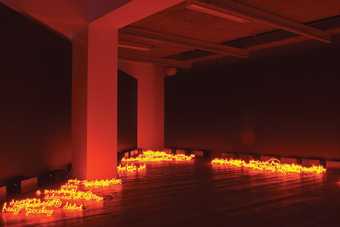
Jill Magid I can burn your face 2008 neon words installed on the floor of a darkened gallery making the room look like it is on fire
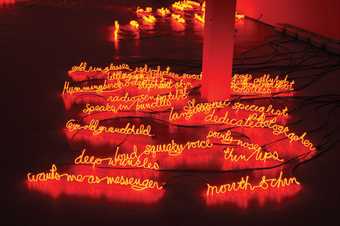
Jill Magid I Can Burn Your Face Miranda III 2008 neon words glowing red like they are flames
The brief from the AIVD was 'find the human face of the organisation'. Instructed to work only with agents who had volunteered to participate, the artist set about recruiting her subjects with an alluring infomercial broadcast on the agency's intranet. Arranging meetings via a third party fixer, Magid met with her subjects in impersonal locations – restaurants, bars, airport meeting points – and began gathering information from a selection of agents. As part of the commission, she proposed to write a report based on these encounters, to be made publicly available, combining personal details of the individual agents she met into a collective persona of the AIVD. Forbidden from using recording equipment during her encounters, she kept handwritten notes from which she created a series of artworks including neons, sculptures, prints and drawings. By collecting the agents' personal information and their accounts of the mechanisms of the agency, Magid hoped to discover the 'face of power' at the centre of what she began to refer to as 'The Organization'.

Jill Magid Vetting Box 2008
Compelled by the idea of a secret at the heart of The Organization, and intrigued by what it would feel like to surrender her identity to the institution, Magid requested to be vetted, and was granted unprecedented security clearance. In this next stage of the project, she began the transformation from artist to agent. In assuming this new function she took inspiration from a literary character, Tarden, the rogue operative in Jerzy Kosinski's 1975 novel Cockpit. At the same time, she shifted from data gatherer to author, as her report morphed from an official document into a novel, Becoming Tarden. By emulating both the fictional character and his creator, Magid gestures to the layers of fact, fiction and role playing that make up intelligence operations.
The exhibition Article 12 at Stroom gallery, The Hague, in 2008 marked the official end of Magid's commission. Exhibiting the project publicly was to be an inversion of the surveillance duties of the agency: during the exhibition the public could scrutinise the institution rather than vice versa. The day before the opening, the AIVD sent a group of agents to the gallery to approve the work. Before they left, Magid handed them a draft of her manuscript so that they could remove any information that might compromise her sources' identities. Upon reading the manuscript, the agents came back, after the show had already opened, to confiscate a number of artworks.
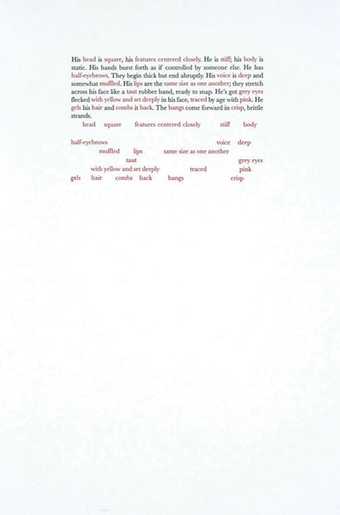
Jill Magid The 18 Spies, Vincent X 2008
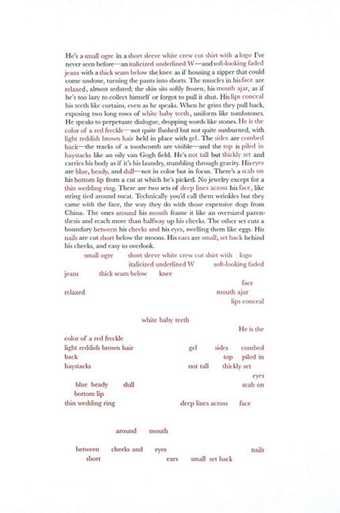
Jill Magid The 18 Spies, Vincent XI 2008
By this time, Magid had returned to the United States. The heavily edited manuscript was delivered to her in Brooklyn by a representative from the Dutch Embassy in Washington. Magid arranged for the handover of the document to be captured by a hidden photographer, adopting The Organization's own tactics. In the redacted text, some of the artist's descriptions of her own thoughts and feelings had been removed in addition to 'potentially sensitive' information given to her by her sources.
Unable to publish the remaining fragments of the text as a coherent novel, Magid protested against this censorship of her own memories. In their letter of July 17 2009, the AIVD suggested that she 'present the manuscript as a visual work of art in a one-time-only exhibition, after which it would become the property of the Dutch government and not be published'. The present exhibition enacts this request. In Authority to Remove Magid explores what it means to have a secret but not the autonomy to share it. She has taken the title from the official Tate form that would need to be completed and signed were her book to be confiscated. By adhering to the rules laid out by the Dutch secret service, Magid intends for this exhibition to constitute the end of her performance, the surrendering of her authorship to The Organization.
I Can Burn Your Face
2008
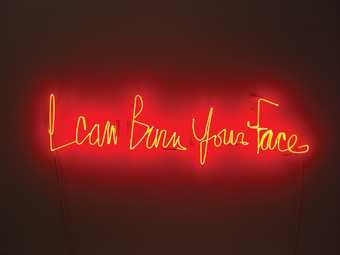
Jill Magid I Can Burn Your Face 2008, installation view
As Magid was forbidden from reproducing images of any of the agents, these works are text-based, inspired by the opaque, almost poetic use of language employed by the AIVD and its agents. 'To burn a face' is a slang expression used among spies for the threat to expose another agent's identity. The neons in the external window of the gallery, I Can Burn Your Face: Miranda III 2008 and I Can Burn Your Face: Vincent II 2008 take as their subject descriptions of the agents Magid met; the words come directly from the artist's notebook and are in her handwriting. The intensity of the red neon echoes the violence of the threat. Each piece reveals specific characteristics of the participating AIVD agents but never fully discloses their identities. Vincent and Miranda are the names of the AIVD's press officers, whose names and faces are publicly known. Their names provided the aliases for all the agents Magid interviewed.
The Directives
2008–9
These large-scale drawings address Magid's desire to make the transformation from artist into agent. Drawing on the subtle and indirect language employed within the AIVD, she combines terms and phrases picked up from the agents she interviewed. The resulting list of instructions hovers somewhere between a love letter and a request for training from The Organization.
Becoming Tarden
2009
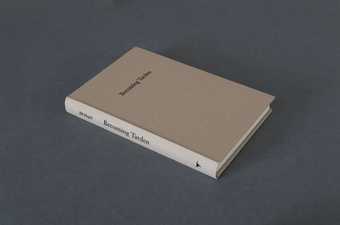
Jill Magid Becoming Tarden 2009
We want you to think of the book as an object of art. We will redact it and put it inside the vitrine with your notebooks where it will remain, permanently.
You want me to put it under glass so that it will no longer function as a book but as a sculpture?
Yes. He blinks his eyes rapidly. It becomes an object of art.
The Director follows this in a soft, imploring voice. Will you consider that, Jill? Epilogue p. 187
By displaying her novel as a sculpture on a plinth, in compliance with the Dutch secret service's request, Magid's book is transformed from a narrative into an art object. Displayed in this way, it can no longer be read, its secrets secure. The body of the book ripped from spine becomes a metaphor for the artist's experience – she has surrendered her first novel but how can she surrender her memory?
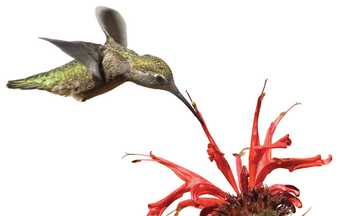
Jill Magid Hummingbird 2008
I was one of the specially trained groups of agents called 'the hummingbirds'. The men and women of this group are so valuable that to protect their covers no central file is kept on them and their identities are seldom divulged to other agents. Most hummingbirds remain on assignment as long as they lead active cover lives, usually as high-ranking government officials, military or cultural officials based in foreign countries. Others serve as businessmen, scientists, editors, writers and artists.
But I always used to wonder what would happen if a hummingbird vanished, leaving no proof...' From Cockpit by Jerzy Kosinski, 1975
Just beneath the surface of this complex body of works, Magid's anxiety about her status within the AIVD is perceptible – that she never really penetrated beyond the façade, that they never actually vetted her, that perhaps she no longer matters. Her poignant letter to the AIVD of August 2009 marks the end of the affair:
The book, Becoming Tarden, is a memoir of our involvement. I had dreams of publishing it as my first novel. You are its only reader. Seize it. Strip it. Hold it in your building and seal it under glass. I comply.' Jill Magid, Letter to AIVD, August
Jill Magid
Jill Magid was born in Bridgeport, Connecticut in 1973 and lives and works in New York. She received her Master of Science in Visual Studies at the Massachusetts Institute of Technology, Cambridge and was an artist-in-residence at the Rijksakademie van Beeldende Kunsten, Amsterdam, 2000–2. Magid has exhibited in various institutions around the world including Tate Liverpool (2004), the Stedelijk Museum Bureau Amsterdam (2005), Gagosian Gallery, New York (2007), Sparwasser, Berlin (2007), Centre D’Arte Santa Monica, Barcelona (2007) and Yvon Lambert, Paris and New York (2009).
To download The Redacted Manuscript and read Magid's prologue and epilogue, visit www.becomingtarden.net
Authority to Remove is curated by Amy Dickson
Top image: Portrait of Jill Magid as Jerzy Kosinski

